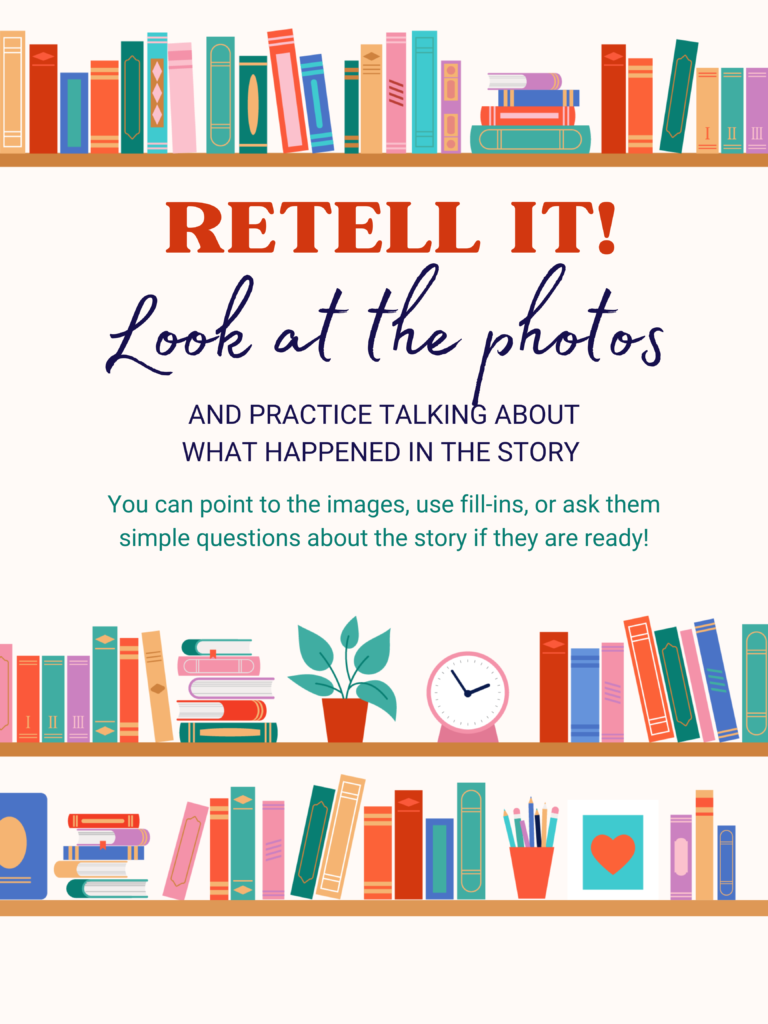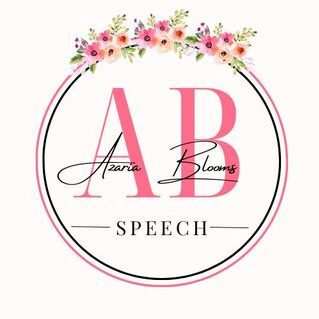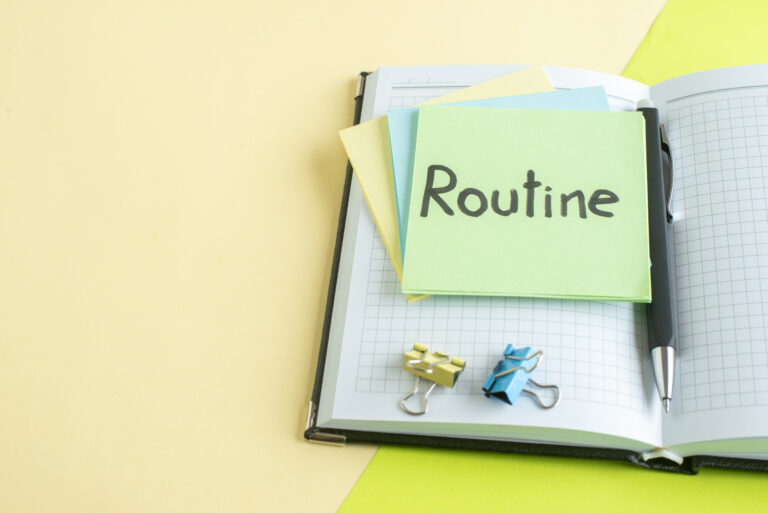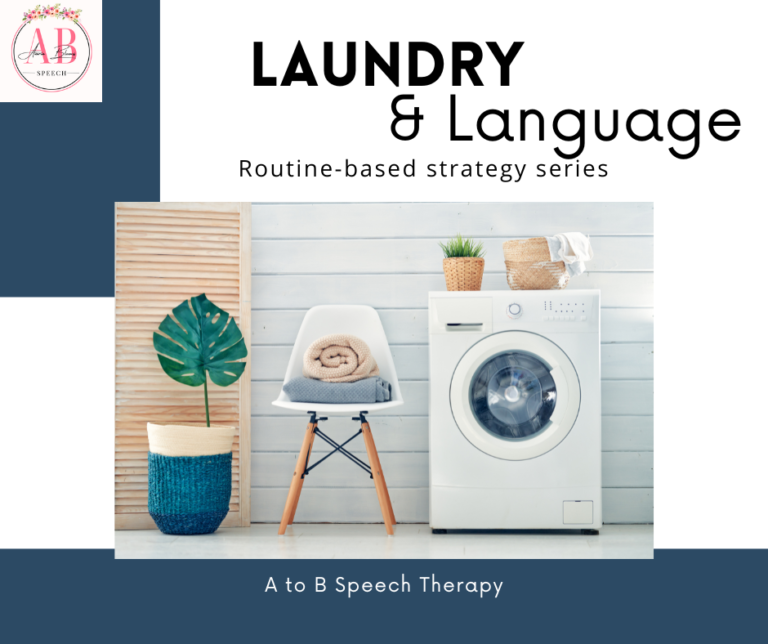Story time is one of the best routines that we can start and share with our littles. As a speech pathologist, I feel that I can talk about this topic for HOURS. In this post, we are going to talk about some tips & tricks that can help your little one engage with a book, learn new vocabulary, and create new connections to their own little lives….PS: it is TOTALLY okay if your little one won’t sit still for long enough to read the entire book, just a little bit of shared interaction is all part of the learning process! There are a wide variety of types of interactions with books that are all normal and beneficial for your child, even if that means just looking at and touching a book for your babies! Read more about this at the end of the post!
Please keep in mind that this blog post does not constitute medical advice, nor does it replace the advice of a licensed speech-language pathologist. The tips and tricks in this blog post are not all-inclusive and are meant to be a brief overview and give you some ideas for how to make reading more fun! Please consult with your SLP for more individualized plans for the little in your life! Please keep in mind to always keep your little away from anything that may be unsafe and consult the label and manufacturers warning for any product recommendations. Please see our full disclaimer about this here.

This post may contain affiliate links, this means that we could receive a commission when you click on one of our links and purchase something that was recommended. In some cases, we may be compensated for writing this post. Don’t worry, it is at no extra cost to you and all opinions and recommendations shared are truly our own! See our full policy here
Let’s talk about some strategies that we can incorporate into our reading to help our little’s stay engaged.
1. Point & Pause
Rather than reading all of the words on a page, we might come up with simple, repetitive phrases to say so that our little knows how to ‘fill in the blank’ (e.g., ‘I see a….’point’, ‘wait for them to fill in’, then you can provide ‘dog’ if they don’t know the word). When you are pointing and pausing, we want to be using exciting pitch changes that help our littles to understand that we are leaving a portion of our phrase blank for them to fill in. If they don’t know the word or try to fill it in, we can model the word for them. This is helping them associate what we are pointing to with the word that we are saying. Some books are purposefully repetitive and we can use these repetitive phrases to create opportunities for our littles to fill in the blank (this depends on how old your little is and how much language they have of course, we can insert pauses before we fill in the blank ourselves if they are not using words yet).
2. Rinse & Repeat
Our little ones learn through repetition…the more we can read their favorite books, the more they will be able to participate with us. Reading the same book over and over might seem like a bore, but in reality, we are reinforcing words, concepts, and new vocabulary that exists within that book. This also gives our littles the consistency and expectations that they need to understand what storytime is!
3. Comment & simplify!
As you are reading, make comments on what you see! You can point to different items in the pictures and label them or talk about actions+items and move your finger along the page (doggy’s running…so fast!!). We want to think about simplifying our language here….if your little is not yet talking, we can model and comment one word. If they are saying about one word at a time, we can model two-word combinations, and so on! We can use these simplified models in between reading or as we are pointing and talking!
4. Ask & Expand (but no quizzing, please!)
Before we talk about this tip, it is important to remember that we want to use questions sparingly. While it might feel natural for us to ask lots of questions while reading, we want to use our time together wisely and help our littles learn language rather than making them feel like we are quizzing them! We want to make sure that we are helping them to develop positive relationships with reading- we can do this by commenting, modeling, and using the tips outlined in this post. With that being said, a few questions here and there are okay- here is how to know what to ask! For a little who is not yet talking, we can ask questions that don’t require a verbal response such as ‘uh oh…I see a big red doggy. Where is the big doggy?’ or ‘can you find the mouse?’. Sometimes I like to whisper the question as if we are playing hide and seek to make this more fun and engage them! This is a good tip to save when you are just about to lose their attention! If your little is older, you can ask them questions about the story to help them to think critically about the story (think about starting your questions with who, where, when, and why to help you get started). For example: ‘Where are they?’ ‘park’ ‘oh, you are right..I know they are at the park because I see swings and a slide!”. If your little responds to a question or makes a comment, expand on it. If they say, “Doggy run,” you can say, “Yes, the doggy is running fast to catch the ball.” This helps them learn new vocabulary and expand their sentence structures.
5. Connect & Relate
You can help your little ones to understand the story by helping them relate it to their little worlds! When reading about something that you know they have experienced or that is familiar to them, point it out! ‘What does the doggy say? Yes, that doggy says ‘woof woof’ just like Luna does!’. You can also point out things in the environment that are in the story, for example, if you are reading about a toy car…you might say ‘I see a toy car! Where is Johnny’s toy car? There it is!’.
6. Add Drama (become an actress/actor!)
Use different voices and pitches, change the rate that you are talking and add lots of pauses for effect! You can whisper and then talk louder, use a super high pitched voice and low pitched voice for different characters and use your own facial expressions to catch their interest or show examples of different emotions in the story. You want to be thinking about using an excited voice- if you are having fun, they are having fun (and vice versa!). You can also use gestures to make the story come alive. Expressive reading captures your little’s attention, draws their attention to key words, and makes the reading experience more enjoyable.
7. New Vocab & Concepts
Just as we will talk about the importance of repetition, reading a new book means a whole new set of vocabulary and concepts that you can model for your little! Remember, we don’t always need to ‘stick to the script’ and can focus on labeling the pictures and talking about what is going on in the story in language that our little can understand. When we are thinking about words to model, we want to think about new ways to expand what our little already knows. For example, if your little knows the words dog and run, we can model ‘doggy’s running’ and then we may also model ‘soft doggy’ or ‘wet doggy’ and we can expand on run by saying ‘running so fast!’ etc. We want to think about how to bridge what our little already knows! When we add a work and expand, we are not only teaching them new concepts, but we are helping them to gain exposure to new grammatical forms by modeling a variety of different word combinations. For example, you are modeling adding ‘-ing’ to a word just by saying ‘running so fast’. Once you pick a few words to model, try to find opportunities to say them throughout the day. If you modeled run and fast in your story, you can talk about how fast the dog can run, how fast their toy runs during play, or how fast or slow they are running, for example.
8. Retell the story
After reading, you can go back through the pages and talk about the characters and what they did in your own words. If they are old enough, you can encourage your little one to tell their own version of the story or use one of the pages to talk about what happened! You can help them through this if they need it by starting the sentence and having them fill in the blank while pointing to the action/character on the page.

9. Give them a task & follow their lead
One of my favorite ‘hacks’ when reading with a little is to ‘give them a task’. Often times, this is to help me flip the page, but this can be any movement you want them to do to help you move through the book- they can pretend to be the bunny ‘hopping’ on the page, move their hand ‘down’ the slide etc. With my very little ones, I like to create a verbal routine (something that we say over and over again) so that they know what to expect. I will say ‘1…2…3… *pause* flip) or (ready, set…flip) and help them flip the page. This way, they are getting some movement in, participating in the story, and learning the word ‘flip’. We want to be using our expressions as we do this to keep it exciting!
By the way, let them move and just keep on reading! A lot of kiddos have a tricky time sitting and listening for an extended period of time and may get up and move around…you can gauge if you feel that they are ready for a break or if they are ready to keep listening as they move, as some kiddos are able to listen even better when moving! We want to follow their lead and if it seems like they are done reading for the moment, we can stop reading, do some active play and then return to it later when they are ready! We don’t want to force them into reading or keep pushing it on them when they need a break- we are focused here on creating positive relationships with reading and sometimes that might mean reading a 1 or a few pages at a time and then taking a play break!

Our expectations:
We also want to remember that our littles are just that…little! Depending on the age of your little, sitting and ‘reading’ a book might not be the expectation for his/her age. Babies under 3 go through stages of ‘playing’ with and interacting with books, from just looking at and touching books around 6-8 months, to showing preferences for specific pictures or objects in a book, beginning to turn pages or pretending to hold a book as if they are reading, to starting to anticipate or request a story around 24-36 months (zerotothree.org). Every little is different, has different interests and attention spans, so don’t get hung up on the numbers! Just remember that there is a wide range of play and interaction with books that are all beneficial for your little, even if it is not actually sitting and reading each page! Be flexible, create positivity around books, and allow your little to explore and learn at their own pace! If you are worried that your little is not meeting their milestones, head to the resources on our home page for a list of websites including milestones that you can take a look at as well as a list of speech-language pathologists by area that you can reach out. If you have concerns, it is always better to chat with a professional and reach out to a SLP that can help you determine how best to support your little!
Wrapping it Up
Using the tips above, you can make reading a fun experience with your little one! It can be a time to bond, relax, have fun, and learn! Reading helps expose littles to lots of different words and concepts and there is research that shows that reading with littles has so many benefits. Remember, it’s okay to just read a little at a time and to go ‘off script’. Talk about your little’s interests, find books that they love, and read, read, read!
Looking for where to access books?
Check out your local library for printed books and let your little participate in picking out a book that they love! If your little is still young and you are worried about ripped pages etc., try a board book! You can also reach out to your little’s teacher or SLP for resources and a list of online book selections. Check out these websites for a list of book recommendations by SLPs!
- https://booksharetime.com/books#
- https://crazyspeechworld.com/2013/07/my-favorite-childrens-books-part-1.html
Where to learn more?
We are currently working on a guide to supporting language while reading! It is a children’s book that has built in prompts to help parents know what to say and ask for optimal language support! It also comes with a free parent ebook all about the ‘why’ behind each strategy! Check out our countdown to the release date HERE!
Here are some helpful links to get you started learning more about reading and language! Please read our disclaimer about recommendations here.







